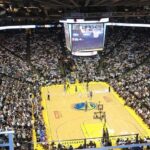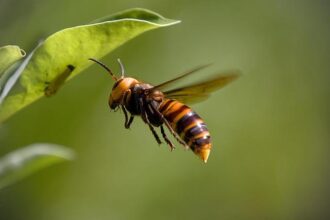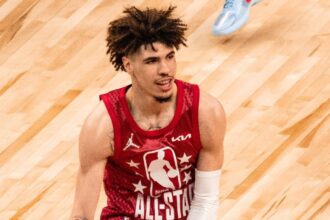As the NBA draft approaches, teams across the league are strategizing to secure their future stars, and the Charlotte Hornets stand at a crucial crossroads in their franchise history. With a revitalized roster and renewed ambitions, the HornetsŌĆÖ draft selections will play a pivotal role in shaping their competitiveness in the Eastern Conference. In this article, we provide a comprehensive year-by-year breakdown of the HornetsŌĆÖ draft picks, analyzing the successes and missed opportunities that have defined their approach to building a championship-caliber team. From emerging talents to potential busts, we explore how these decisions have impacted the franchiseŌĆÖs trajectory and what they signify for its future. Join us as we delve into the legacy of the HornetsŌĆÖ draft history and highlight the crucial choices that will determine the path ahead for Charlotte basketball.
Evaluating CharlotteŌĆÖs Draft Decisions: Successes and Failures in Player Selection
In evaluating the Charlotte HornetsŌĆÖ draft decisions over the years, itŌĆÖs crucial to recognize both the successes and failures that have shaped the franchiseŌĆÖs trajectory. When the Hornets have hit the mark, theyŌĆÖve made significant additions to their roster, such as the selection of LaMelo Ball in 2020. This pick not only energized the fan base but also provided a clear franchise cornerstone. On the contrary, the selection of players like Frank Kaminsky in 2015 raised eyebrows, as he hasnŌĆÖt lived up to the expectations of a lottery pick. The dichotomy of these choices demonstrates the unpredictable nature of the draft process, where even highly touted prospects can falter under NBA scrutiny.
The following table summarizes key draft picks by the Charlotte Hornets, highlighting their immediate impact on the team:
| Year | Player | Impact |
|---|---|---|
| 2020 | LaMelo Ball | Rookie of the Year |
| 2015 | Frank Kaminsky | Underperformed |
| 2019 | P.J. Washington | Solid contributor |
| 2011 | Kemba Walker | Franchise player |
These selections reveal a mixture of strategic brilliance and frustrating missteps. Analyzing the impact of each draft pick shows a trend where the organization has occasionally found gems that not only contribute immediately but also have solid long-term potential. However, CharlotteŌĆÖs struggles in evaluating certain prospects emphasize the need for ongoing improvement in their scouting and development processes. As the team continues to refine its strategies, the hope is for a more consistent record in future drafts, one that builds upon the franchiseŌĆÖs identity and fortifies their position in the competitive landscape of the NBA.
Trends in Hornets Draft Strategy: Analyzing Patterns and Changes Over the Years
The Charlotte Hornets have consistently evolved their draft strategy over the years, reflecting a commitment to adaptability in a competitive landscape. Historically, the franchise has shown a tendency to favor players with collegiate experience, often prioritizing those who demonstrate both skill and a readiness to contribute immediately. This approach is evident when examining the profiles of their recent first-round selections, which have included versatile forwards and defensive-minded players. In the last decade, the Hornets have begun to strike a balance, infusing their draft strategy with a mix of high-ceiling prospects and reliable contributors who can fill immediate gaps on the roster. Key selections have included:
- LaMelo Ball - 2020: A transformative point guard with playmaking abilities.
- James Bouknight - 2021: A scoring wing with potential for offensive explosion.
- Mark Williams - 2022: A defensive anchor bringing size and shot-blocking.
Moreover, recent drafts have reflected a shift towards embracing international talent, showcasing the teamŌĆÖs willingness to scout beyond traditional college programs. By tapping into the overseas talent pool, the Hornets have been able to secure unique skill sets, enriching their roster with players who bring diverse experiences. This shift is particularly evident in the 2023 draft, where Charlotte selected a promising European prospect known for his high basketball IQ and multifaceted skill set. A breakdown of the HornetsŌĆÖ recent draft picks illustrates this blend of strategy:
| Year | Draft Pick | Player Position | Notable Traits |
|---|---|---|---|
| 2020 | 3 | PG | Playmaking, Vision |
| 2021 | 11 | SG/SF | Scoring Ability |
| 2022 | 15 | C | Defense, Rebounding |
| 2023 | 10 | PF | Versatility, Shooting |
Future Focus: Recommendations for Optimizing CharlotteŌĆÖs Draft Picks Going Forward
As Charlotte looks to refine its drafting strategy, several key recommendations can enhance the impact of their future picks. Firstly, the Hornets should prioritize player versatility in their scouting reports, aiming for athletes capable of excelling in multiple positions. This flexibility will not only bolster roster depth but also enable the coaching staff to adapt their game plans more effectively depending on the opponent. Additionally, focusing on high-character individualsŌĆöplayers known for their work ethic, resilience, and team-first mentalityŌĆöcan cultivate a positive locker room culture, essential for long-term success.
Evaluating talent should also include an emphasis on analytic metrics and performance data. By integrating advanced statistics into their scouting process, the Hornets can identify under-the-radar prospects that traditional scouting might overlook. Furthermore, establishing closer ties with collegiate programs and international scouting networks will ensure access to a wider pool of talent, thus expanding the teamŌĆÖs options. Creating a dedicated draft preparation team that focuses on both current and future needs can lead to more informed decisions, ultimately optimizing the value of each draft capital invested.
Concluding Remarks
In conclusion, the Charlotte HornetsŌĆÖ draft picks over the years reflect a complex tapestry of ambition, strategy, and, at times, missed opportunities. As we have seen in this year-by-year breakdown, the decisions made during the draft have significantly influenced the franchiseŌĆÖs trajectory and overall competitiveness in the league. With each selection, the Hornets have sought to build a foundation for long-term success, grappling with the challenges and unpredictability inherent in talent evaluation. As the team looks toward the future, fans and analysts alike will be keenly watching how management applies the lessons learned from their past draft decisions. The stakes are high, and with the potential for new talent on the horizon, the Hornets are at a critical juncture in defining their identity and ambitions in the ever-evolving landscape of the NBA.













